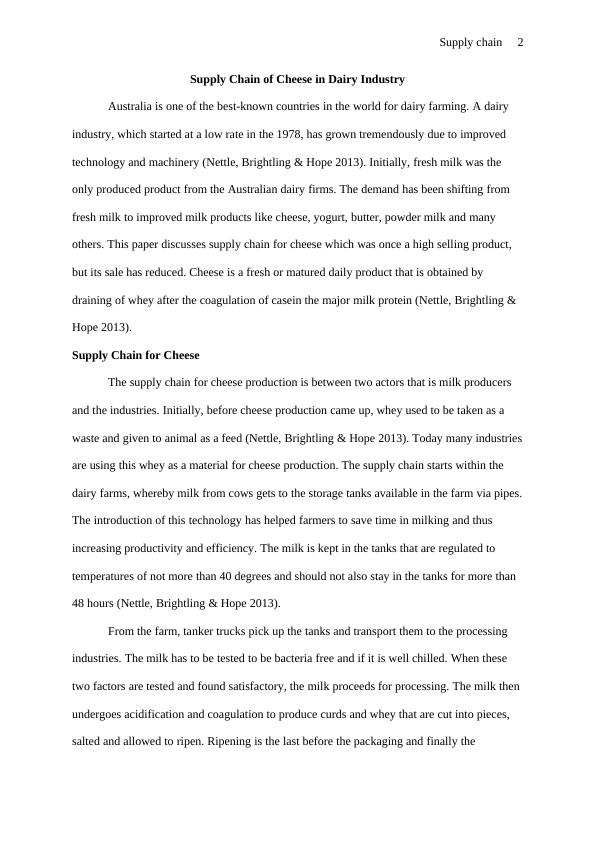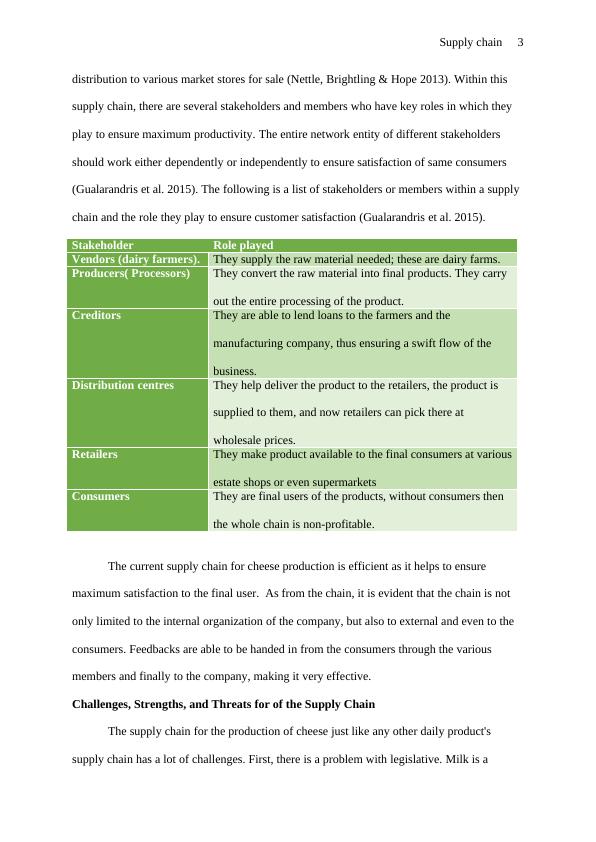(PDF) Dynamics Of Australian Dairy-Food Supply Chain
7 Pages1628 Words395 Views
Added on 2020-04-01
About This Document
Australia is one of the best-known countries in the world for dairy farming. This paper discusses supply chain for cheese which was once a high selling product, but its sale has reduced. Cheese is a fresh or matured daily product that is obtained by draining whey after the coagulation of casein the major milk protein (Nettle, Brightling & Hope 2013). Supply Chain for Cheese. The supply chain for cheese production is between two actors that is milk producers and the industries.
(PDF) Dynamics Of Australian Dairy-Food Supply Chain
Added on 2020-04-01
ShareRelated Documents
End of preview
Want to access all the pages? Upload your documents or become a member.
104803M - Australian Dairy Industry analysis - Case Study
|20
|3321
|40
Importance of Social and Environmental Standards in UK Dairy Industry
|10
|2148
|296
Case of Vinamilk in F&B industry in Vietnam
|16
|4252
|613
Accounting Information System: Report
|20
|4412
|61



